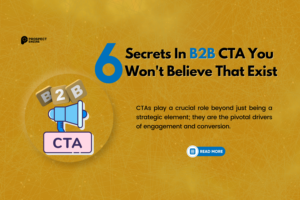The sale to enterprise-level businesses follows a narrative structure with a beginning, middle, and end. Throughout the process of targeting lead business prospects, you’ll learn several key things at the outset and throughout the sale:
- Things unrelated to business (about their kids, hobbies, if they like bacon, etc.)
- The conditions and events precipitated your prospect’s desire to speak with you.
- Where is your prospect at the moment?
- How a ‘better’ future may appear.
- What a ‘better’ future is worth.
- Obstacles they’ve encountered.
- Budget.
- Scope.
- Who makes the decisions?
Re-read the list above. Is there anything that is missing? It’s a big one.
Timing
Once you understand time, you can lead business prospects in reaching the ‘end’ or making a choice. Sometimes the ultimate result is a victory for you. Sometimes it’s a victory for your opponent. And, statistically, half of the time, the final result is that your prospect remains with the devil they know. If you understand time, you may prevent being locked in limbo by using a questioning framework known as CLWPC.
CLWPC
Change: “Is this anything you want to alter at the moment?”
This simple but effective inquiry may save you months of time and effort. Inquire early.
Live: “When would you wish to begin living (or beginning to reap the benefits)? September? November?”
This question assists you in developing a calendar that incorporates the actions necessary to meet your prospect’s go-live date.
Why: “Why not simply wait and see what happens if you miss this deadline?”
When targeting lead business prospects, one key question is what drives their urgency for change. Do they seem nonchalant and say they can wait, or do they light up and explain why waiting is not an option? This helps you gauge their level of “energy” and motivation for change.
Individuals change for their reasons, not yours, owing to a phenomenon known as confirmation bias. Confirmation bias is the tendency to seek, understand, prefer, and remember information that supports one’s initial ideas or assumptions. Therefore, if your prospect rattles off all the reasons they can’t wait, they are more likely to stick to their ideas and make the transition. However, the words must originate from them, not from you.
Project Schedule: By creating a project plan, you can help lead busy prospects through the process of going live. Reverse-engineered from their go-live date, the plan outlines all necessary phases and dates, easing the process. Lead business prospects with this helpful tool.
Here’s an example:
- Get buy-in from key stakeholders on the project plan – March 5
- Run proposal by CMO (decision maker) – March 15
- Decision date – March 30
- Meeting with IT to discuss technical requirements – April 5
- Legal review – April 15
- Procurement – May 5
- Contact Sign-Off – June 1
- Kickoff – June 10
- Implementation – June 20
- Launch – July 1
Commitment: When targeting lead business prospects, consider phrasing your meeting requests in a way that doesn’t pressure them. For example, you could ask, “Would it be possible to schedule a call on April 1 to discuss your parents’ decision? And if you decide not to work with us, that’s okay too – we won’t hold it against you.”
When targeting lead business prospects, asking about a decision-making date can yield two outcomes: either they agree, and a date is set, or they don’t, which could suggest that something was missed earlier in the sales process.






